
Polysiphonia lanosa is a common species of the red algae (Rhodophyta) often to be found growing on Ascophyllum nodosum.
Polysiphonia atlantica is a small filamentous species of red marine algae Rhodophyta. The thalli form small tufts up to 3 cm long. The axes are ecorticate consisting of axial cells surrounded by four periaxial cells.

Polysiphonia ceramiaeformis, also called banded siphon weed, is a small red algae (Rhodophyta), in the genus Polysiphonia. Individuals are irregularly branched with the branches extending up to 5.5 centimetres (2.2 in) from a central node and ending in dense tufts of fibres.
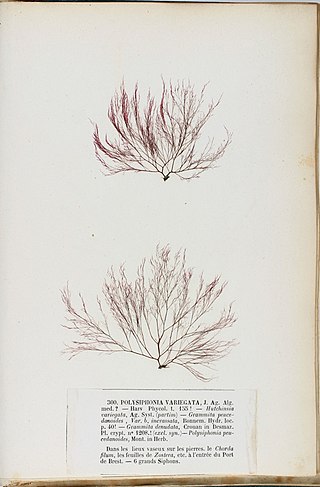
Polysiphonia denudata is a small red alga, Rhodophyta, growing as tufts up to 20 cm long without a main branch axis.
Polysiphonia devoniensis is a species of marine algae. It is a small red alga in the Division Rhodophyta. It is a species new to science only described recently and first published in 1993.
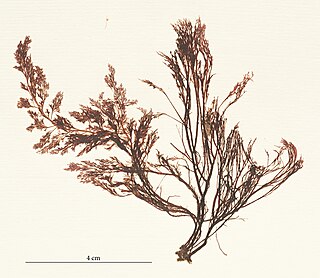
Polysiphonia elongata is a small red marine algae in the Rhodophyta.
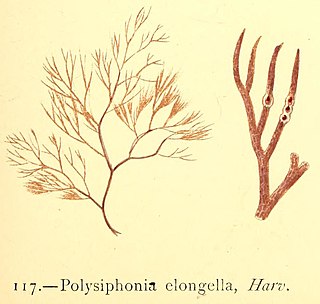
Polysiphonia elongella Harvey in W.J. Hooker is a branched species of marine red algae in the genus in the Polysiphonia in the Rhodophyta.
Polysiphonia foetidissima Cocks ex Bornet is small red marine alga in the Rhodophyta.
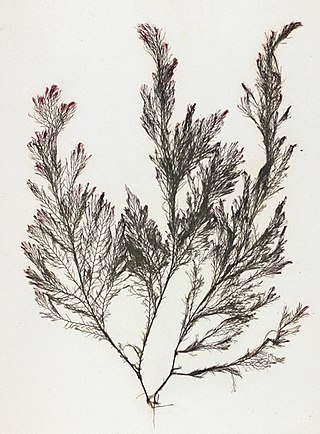
Polysiphoides fucoides (Hudson) Greville is a common marine alga in the Division Rhodophyta.

Melanothamnus harveyi, Harvey's siphon weed, is a small marine red alga in the division of Rhodophyta.
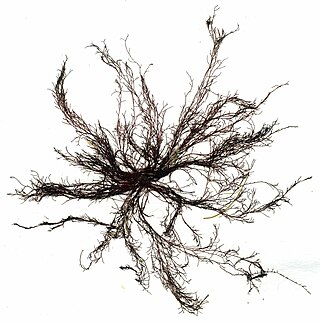
Polysiphonia stricta is a small red marine alga in the Division Rhodophyta.

Vertebrata simulans Harvey is a small densely branched alga in the Division Rhodophyta.

Vertebrata subulifera is rather small marine alga in the division Rhodophyta.
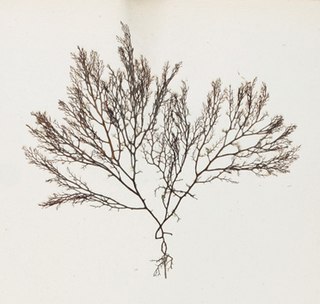
Vertebrata fruticulosa(Boergeseniella fruticulosa Kylin) is a small marine alga in the Division Rhodophyta.
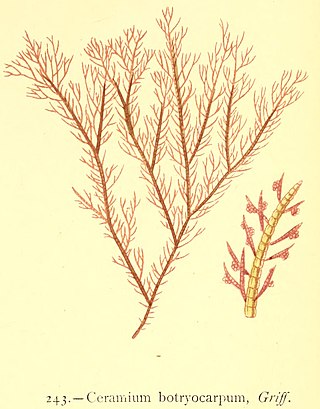
Ceramium botryocarpum is a small red marine alga in the Division Rhodophyta.
Ceramium flaccidum is a small red marine alga in the Division Rhodophyta.

Ceramium gatitanum is a small marine red alga.
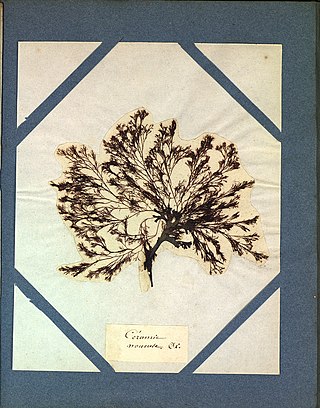
Ceramium nodulosum is a small red marine alga. There is confusion surrounding this name.
Ceramium secundatum is a small marine red alga.
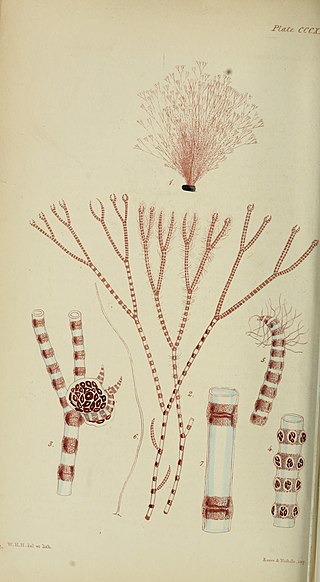
Ceramium strictum is a small marine red alga.















